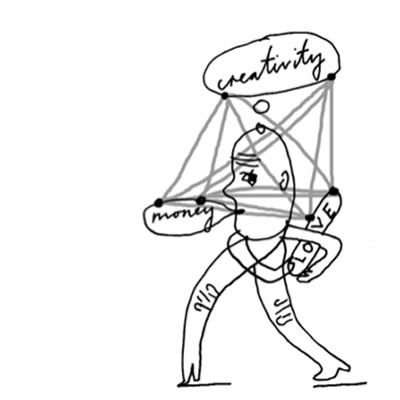First published on November 2011.
In 1981, I was in high school in America, immersed in a curriculum scheme called ‘college prep’. This is roughly equivalent to A-level work in Britain, albeit with less flexibility: back then, if you wanted to be positioned for university consideration, you took courses x, y and z, no questions brooked.
Were I required now to reproduce virtually any of my college prep work – solving quadratic equations, sketching the carbon cycle, diagramming a sentence – I doubt I could do it. This is hardly surprising: I was required to consume and regurgitate information mainly to satisfy the shadowy figures deciding my academic future. Understanding the value or meaning of what I was learning was by the by. As a result, I consumed what I was told to consume and promptly forgot most of it.
There is an exception. 30 years on, my knowledge and understanding of the Vietnam War remains, at least, above average: this despite it being only a four-week block of work in a college prep course entitled merely, ‘World History’. I remember the teacher and the coursework with a clarity that transcends time. Critically, I can also trace any number of essential research, communication and interpersonal skills to that short period of study – skills that have enabled me to thrive professionally and personally ever since.
He wouldn’t have put it as such, but my history teacher was engaging us in creative learning. He encouraged us to pursue the subject however we saw fit: the results included visual and audio installations, performances and creative writing. We were judged more on the energy of our enquiry than on facts and details; perhaps not surprisingly, because we enjoyed what we were doing, most of us got our facts and details right.
If we ask ourselves what education should be ‘for’ in the 21st century, the answer is the same as it was in 1981, and probably much further back. Education is the process of training the mind; to succeed in that, we must be encouraged to ask questions, make connections and pursue knowledge and ideas based on the particular chemistry of our personalities. This is hardly a new concept. Sir Ken Robinson said it all more than a decade ago in Out of Our Minds, which itself was largely an artful commentary on the vast array of evidence pointing the way towards a creativity-led, rather than rote-led, future.
As now, the year 1981 saw a severe global recession. In times of crisis, societies often revert to conservative principles; in this way, we try to recapture what we believe used to work, ‘when things were good’ (or at least better). Back in 1981, that meant a return to learning by rote, focusing on the three Rs, going ‘back to basics’. My history teacher went against the grain: he rewarded us for independent thinking and creative expression. That’s why he’s so memorable.
Likewise, the current economic and political climate has not been kind to creative learning. We’re hunkering down, tightening belts, trimming what is perceived as ‘fat’ from all parts of society. But creativity isn’t a luxury item; as for creative learning, it’s arguably more important than ever. The question is how to sell it in this market. It’s not impossible. Consider the following three ideas.
The first involves rebranding creative learning in the context of innovation, a word almost synonymous with future economic growth. Economist Theodore Levitt once said, ‘Creativity is thinking up new things. Innovation is doing new things.’ But creativity itself grows from certain skills that a fact-and-test-driven educational culture doesn’t necessarily encourage: risk taking through experimentation, collaborative problem solving, idea generation, and self-management. More must be done to ensure that these concepts, and their value, are embedded in our educational provision.
Secondly, creativity must be led out of the ‘arts ghetto’ to more fully embrace professions that resonate more clearly with a conservative Zeitgeist. Creative Partnerships was an innovative and largely successful experiment in creative learning but its heavy emphasis on the arts too often excluded other professionals offering a different flavour of creativity. How about an architect refreshing GCSE literature? A banker tackling world history via economics? A more inclusive idea of creative learning – and where creativity ‘lives’ – would benefit everyone.
Finally, ministers and the general public need to understand that many of our competitors and collaborators are embracing creative learning as a key driver of future growth. New creative learning programmes are now under way across Europe; China, too, is beginning a slow shift towards less rote learning and more emphasis on enquiry, ideation, reflection and other classic components of creative learning. And in America, the Obama administration issued a sweeping report in May underscoring the need for more creativity in schools; much of its language echoes programmes like Creative Partnerships. If we are serious about continuing to be a world-beating society, we need to look at what our competitors/collaborators are doing and ensure that we’re not falling behind…particularly when we’re considered by many others, to be in the lead.
Economic crises come and go. The time is now to ensure that the value of creativity is firmly embedded in our schools…the better to ensure that we’re more resilient and flexible in the next downturn, whenever it comes.
 Creativity Money Love: Learning for the 21st Century by Creative & Cultural Skills is licensed under a Creative Commons Attribution-NonCommercial-NoDerivs 3.0 Unported License.
Creativity Money Love: Learning for the 21st Century by Creative & Cultural Skills is licensed under a Creative Commons Attribution-NonCommercial-NoDerivs 3.0 Unported License.
Illustrations by Paul Davis - http://copyrightdavis.blogspot.com/


